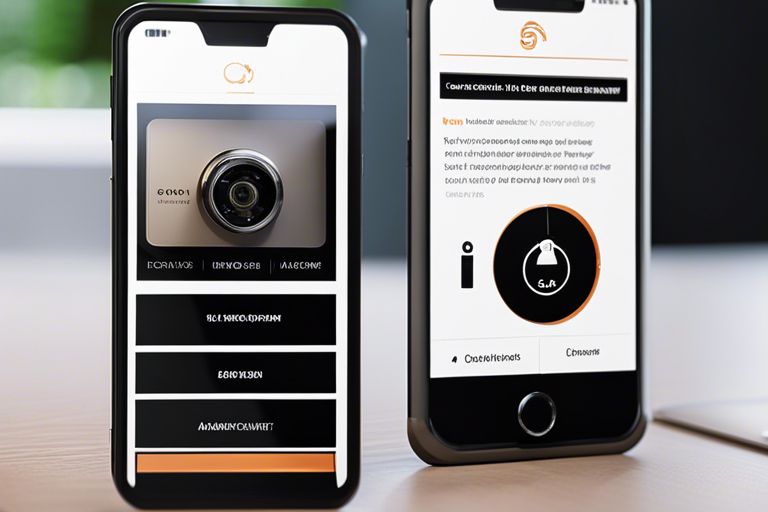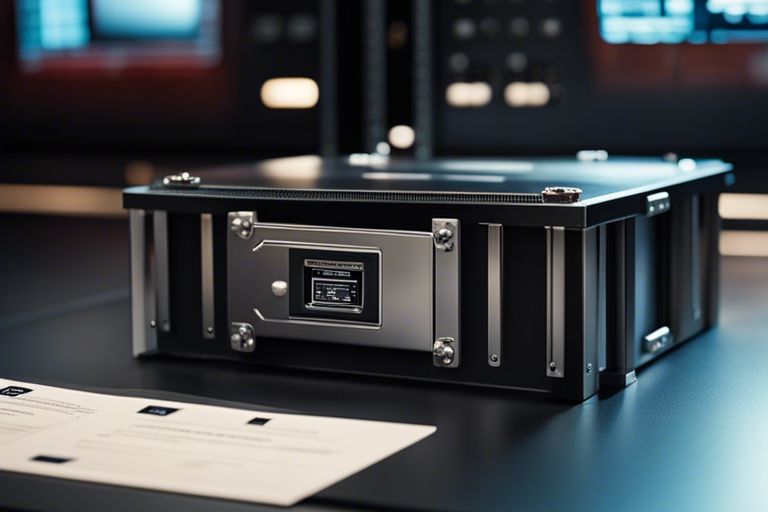AI-driven surveillance systems have revolutionized the way we approach security and monitoring in various industries. These cutting-edge technologies offer a myriad of benefits, from real-time threat detection to predictive analytics that can prevent potential risks before they escalate. In this blog post, we investigate into the untapped potential of AI-powered surveillance systems, exploring how businesses and organizations can leverage these advanced tools to enhance safety, increase efficiency, and gain valuable insights for better decision-making.
Key Takeaways:
- Enhanced Security: AI-powered surveillance systems offer advanced monitoring capabilities, minimizing the risk of security breaches and unauthorized access.
- Real-time Analysis: These systems can analyze vast amounts of data in real-time, enabling immediate responses to potential security threats or suspicious activities.
- Improved Efficiency: By automating surveillance processes, AI technology can increase the efficiency of security operations, reducing the workload on human operators.
- Predictive Analytics: AI algorithms can predict patterns of behavior, allowing for proactive security measures to be implemented to prevent crimes before they occur.
- Scalability and Adaptability: AI-powered surveillance systems can easily scale to accommodate changing security needs and adapt to new threats through continuous learning and updates.
Technical Foundations of AI Surveillance
If you’ve ever wondered about the technical underpinnings of AI-powered surveillance systems, this chapter is for you. In this section, we’ll explore into the key technologies that drive AI surveillance and explore how these systems integrate with existing security infrastructure.
Key Technologies Behind AI Surveillance
One of the key technologies driving AI surveillance is computer vision. This technology enables machines to interpret and understand the visual world, allowing them to analyze video feeds in real-time and identify objects, people, and patterns of interest.
Another crucial technology powering AI surveillance is machine learning. Through the use of algorithms and statistical models, machine learning enables surveillance systems to learn from data, make predictions, and continuously improve their performance over time.
Integration with Existing Security Infrastructure
Surveillance systems powered by AI are designed to seamlessly integrate with existing security infrastructure, such as access control systems and alarm systems. This integration allows for a more comprehensive approach to security, where AI surveillance can work in tandem with other security measures to enhance overall safety and protection.
It is essential for organizations to consider how AI surveillance systems can complement their current security setup. By integrating AI-powered surveillance with existing security infrastructure, businesses can create a more robust security ecosystem that leverages the latest technological advancements to safeguard their assets and people.
Advantages of AI-enhanced Surveillance
While advancements in technology continue to reshape the landscape of surveillance systems, AI-powered solutions have emerged as game-changers in enhancing security and operational efficiency. The advantages of leveraging AI in surveillance are multifaceted, offering a range of benefits that traditional systems simply cannot match.
Real-time Threat Detection and Analysis
Any modern surveillance system equipped with AI capabilities is capable of real-time threat detection and analysis, providing security personnel with instant alerts and insights into potential risks. By leveraging deep learning algorithms, these systems can distinguish between normal activities and suspicious behavior, flagging anomalies for immediate attention. This proactive approach not only minimizes response times but also helps in preventing security breaches before they escalate.
AI-powered surveillance systems can analyze vast amounts of data in real-time, enabling rapid decision-making and response strategies. By continuously monitoring and interpreting video feeds, these systems can identify patterns, trends, and anomalies that might go unnoticed by human operators. This level of intelligence and automation significantly enhances the overall security posture of any organization, making it a valuable asset in today’s threat landscape.
Resource Optimization and Cost Efficiency
Efficiency in resource allocation is a key advantage of AI-enhanced surveillance systems. By automating repetitive tasks such as monitoring multiple video feeds simultaneously, AI reduces the workload on security personnel, allowing them to focus on critical tasks that require human intervention. This not only optimizes staffing levels but also improves operational efficiency by streamlining security processes.
The integration of AI into surveillance systems also translates into cost savings for organizations. By reducing the reliance on manual monitoring and analysis, AI-powered solutions lower the overall operational costs associated with security management. Additionally, the predictive capabilities of AI help in preventing incidents, thus mitigating potential financial losses that may arise from security breaches.
The ability of AI-enhanced surveillance systems to optimize resources and drive cost efficiency makes them indispensable tools for organizations looking to enhance their security measures without compromising on operational effectiveness. By harnessing the power of AI, businesses can stay one step ahead of potential threats and ensure a safe and secure environment for their assets and personnel.
Ethical Considerations and Privacy Concerns
Balancing Security with Individual Rights
Security is a top priority when it comes to the deployment of AI-powered surveillance systems. However, it is crucial to strike a balance between security needs and individual rights. While these systems can greatly enhance public safety and security measures, they also have the potential to infringe on personal privacy.
It is essential for organizations and authorities to establish clear guidelines and protocols for the ethical use of surveillance technology. Transparency, accountability, and oversight are key principles that should guide the deployment of these systems to ensure that they are being used responsibly and in alignment with legal and ethical standards.
Best Practices for Ethical Deployment
An ethical deployment of AI-powered surveillance systems requires a comprehensive approach that considers not only the technological capabilities but also the ethical implications of their use. Organizations should conduct thorough impact assessments to evaluate potential risks and benefits, engage with stakeholders to gather feedback and address concerns, and regularly review and update policies to ensure compliance with regulations and ethical standards.
It is also important to prioritize data protection and privacy by implementing robust security measures, such as encryption and access controls, to safeguard sensitive information collected by surveillance systems. Additionally, ongoing training and education programs for personnel involved in the operation of these systems can help promote awareness and adherence to ethical guidelines.
Future Developments and Trends
Predictive Policing and Proactive Security Measures
Policing in the future will rely heavily on AI-powered surveillance systems to implement predictive policing strategies and proactive security measures. By analyzing vast amounts of data from various sources, including social media, criminal records, and real-time sensor data, law enforcement agencies will be able to anticipate and prevent crimes before they occur. This shift towards a more proactive approach will not only help in reducing crime rates but also improve overall safety and security in communities.
Furthermore, the integration of AI algorithms in surveillance systems will enable law enforcement agencies to identify patterns and trends that human analysts may overlook. By leveraging machine learning and predictive analytics, these systems can forecast potential criminal activities and alert authorities in real-time. This proactive approach to policing will revolutionize law enforcement practices and enhance public safety in unprecedented ways.
Next-Generation AI Surveillance Innovations
Security in the future will witness the emergence of next-generation AI surveillance innovations that go beyond traditional CCTV systems. These advanced surveillance systems will have the ability to detect anomalies, track suspicious behaviors, and even recognize faces in crowded spaces. By incorporating deep learning algorithms, these AI-powered systems will provide unparalleled accuracy and efficiency in monitoring activities and identifying potential threats.
Any organization or facility looking to enhance its security posture can benefit from the latest advancements in AI-powered surveillance technology. These systems not only offer real-time monitoring and threat detection capabilities but also provide valuable insights for optimizing security protocols and emergency response strategies. Investing in next-generation AI surveillance innovations is crucial for staying ahead of evolving security threats and ensuring a safe environment for all.
Summing up
Hence, it is clear that AI-powered surveillance systems have immense untapped potential in enhancing security measures across various sectors. By leveraging advanced algorithms and machine learning capabilities, these systems can provide real-time insights, proactive threat detection, and efficient data analysis. As technology continues to evolve, organizations can harness the power of AI to stay ahead of security challenges and protect assets effectively.
FAQ
Q: What are AI-powered surveillance systems?
A: AI-powered surveillance systems use artificial intelligence technology to analyze video feeds and detect anomalies or suspicious activities in real-time.
Q: How do AI-powered surveillance systems enhance security?
A: AI-powered surveillance systems can automatically monitor large areas, identify potential threats, and alert security personnel much faster and more accurately than traditional surveillance methods.
Q: What are the key benefits of using AI-powered surveillance systems?
A: Some key benefits include improved security, reduced response times to incidents, increased efficiency in monitoring large areas, and the ability to analyze vast amounts of data quickly.
Q: How can AI-powered surveillance systems be customized to specific needs?
A: AI-powered surveillance systems can be tailored to meet the unique requirements of different environments by adjusting parameters such as detection sensitivity, monitoring zones, and alert settings.
Q: Are AI-powered surveillance systems cost-effective in the long run?
A: While the initial investment may be higher than traditional surveillance systems, the long-term cost savings from improved security, reduced manpower, and increased efficiency often make AI-powered surveillance systems a cost-effective choice for many organizations.






